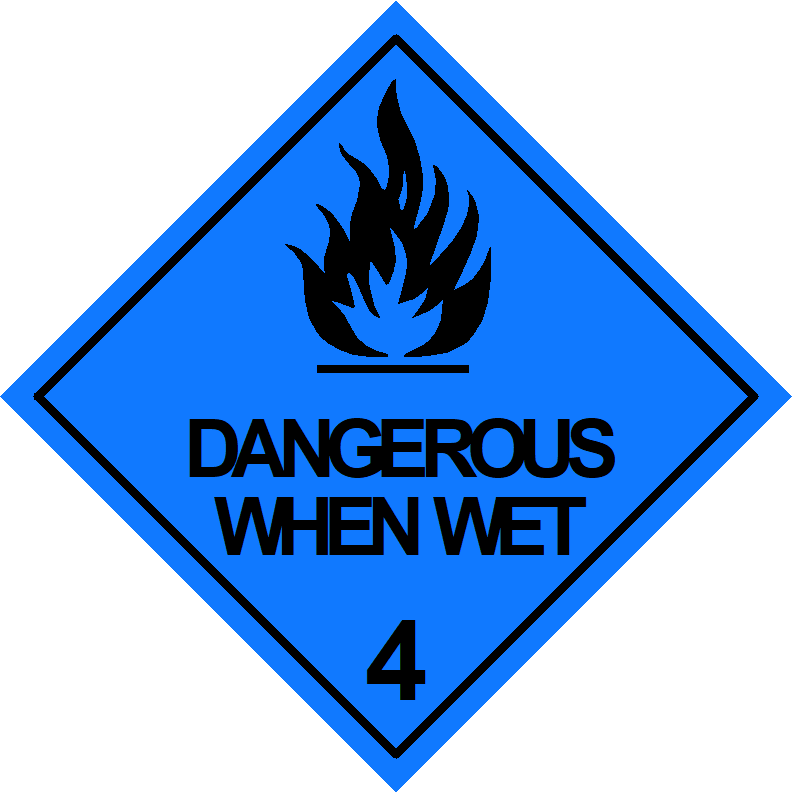Class 4 – Flammable Solids
Substances liable to spontaneous combustion
Substances which, in contact with water, emit flammable gases
Class 4 is divided into three divisions as follows
Division 4.1 Flammable solids
Solids which, under conditions encountered in transport, are readily combustible or may cause or contribute to fire through friction; self-reactive substances which are liable to undergo a strongly exothermic reaction; solid desensitized explosives which may explode if not diluted sufficiently;
Division 4.2 Substances liable to spontaneous combustion
Substances which are liable to spontaneous heating under normal conditions encountered in transport, or to heating up in contact with air, and being then liable to catch fire;
Division 4.3 Substances which in contact with water emit flammable gases
Substances which, by interaction with water, are liable to become spontaneously flammable or to give off flammable gases in dangerous quantities.
Class 4 substances are identified by the Class 4 labels and Class 4 designation in any Safety Data Sheet.

Division 4.1 Flammable Solid

Division 4.2 Substances Liable To Spontaneous Combustion

Division 4.3 Substances Which, In Contact With Water, Emit Flammable Gases
Refer to:
- Local Regulations
- Australian Dangerous Goods (ADG) Code or IMDG Code or IATA
- AS 1216 Class labels for dangerous goods
- AS/NZS 4745 Code of practice for handling combustible dusts
- AS/NZS 5026 The storage and handling of Class 4 dangerous goods
- Purchase the Australian Standards
- Safety Data Sheets
